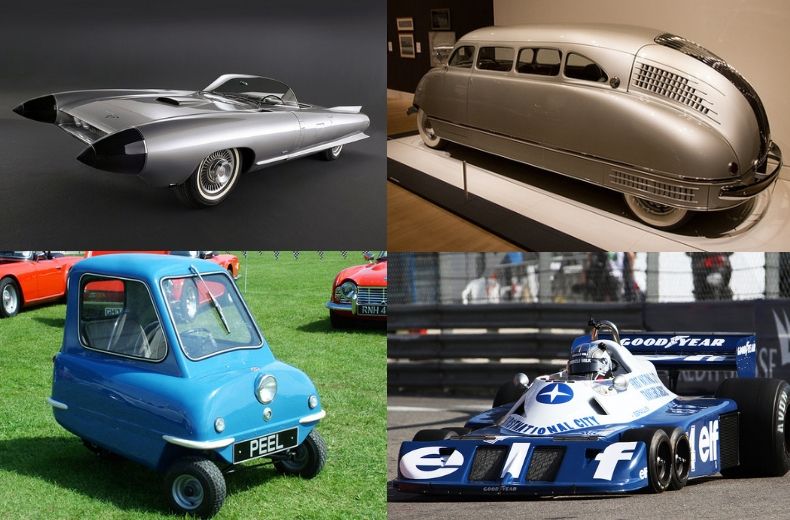BMW Isetta (1956)
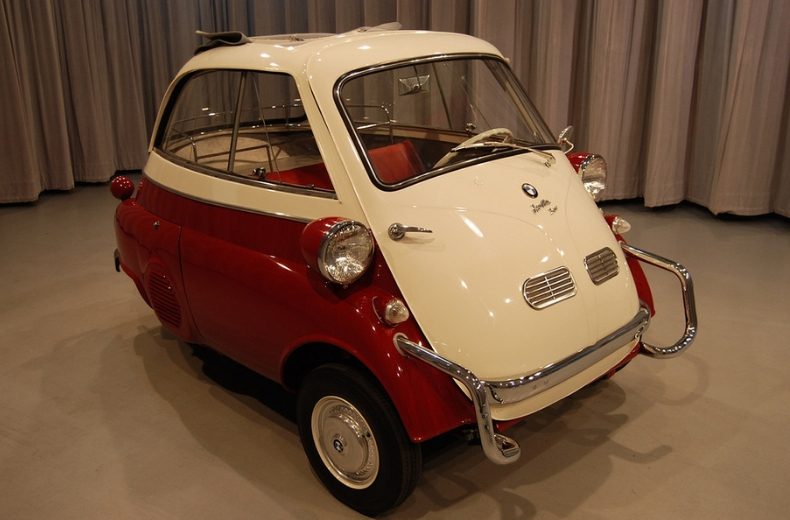 Source: Steve Ooley
Source: Steve Ooley
The famous “bubble car” had originally been made by Italian fridge manufacturers Iso Isetta before BMW took over the rights to the three-wheeler and made it their own. The German firm increased the car’s power to a mighty 13hp and sold over 160,000 units before discontinuing the model in 1962.
One of the most iconic European cars of all time, the Isetta featured a single bench seat and, remarkably, no side doors. Drivers entered the car by swinging open the entire front of the car, dashboard included.
Ferrari Monza SP1 (2018)
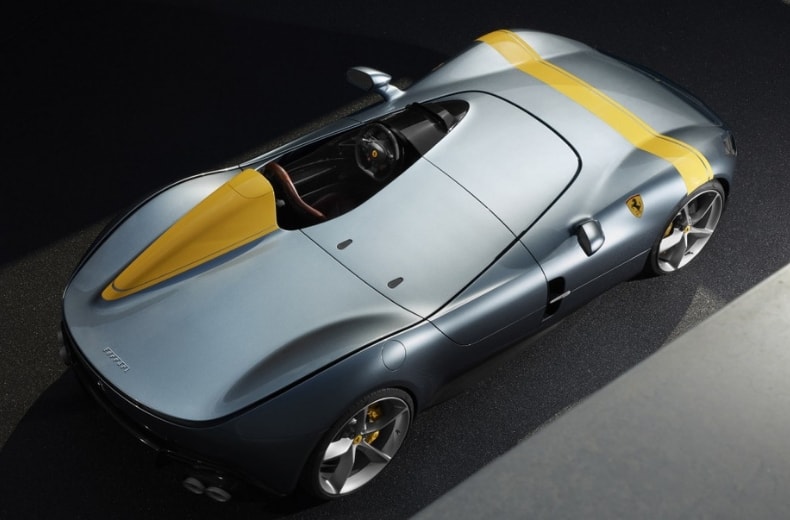 Source: Ferrari
Source: Ferrari
Labelled by the Italian manufacturer as the “closest drive to Formula 1” when it was launched in summer 2018, the limited-edition Ferrari Monza SP1 produces nearly 800hp and reaches speeds of 100km/h (62mph) in just 2.9 seconds.
The SP1 has just one seat and comes with neither a roof or a windscreen. Instead, the car employs an innovative ‘virtual windscreen’ system incorporated into the fairing that deviates air flow. Impressive; we’d probably still pick up a decent pair of goggles though...
READ MORE: Buying a used car — the ultimate checklist
Ford Speedster (1932)
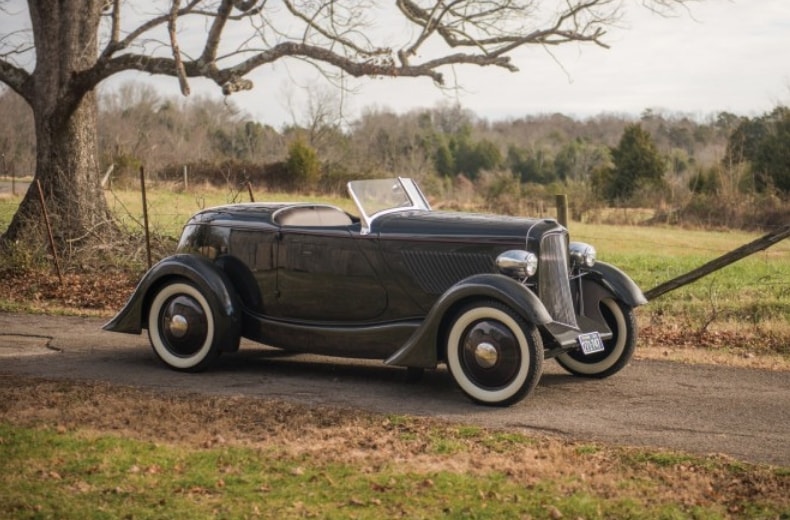 Source: Darin Schnabel
Source: Darin Schnabel
The brainchild of Henry Ford’s son, Edsel Ford, and designer Eugene Gregoire, the 1932 Speedster relied on the then-new flathead V-8 engine for power and is often referred to as the first Ford product to be based on European design trends.
The Speedster was ahead of its time in many ways, even including a starter button that would later become commonplace. But if you’re looking to purchase this piece of automotive history be prepared to pay a fair whack - a Speedster sold for over £650,000 in 2016.
Tyrrell P34 (1976)
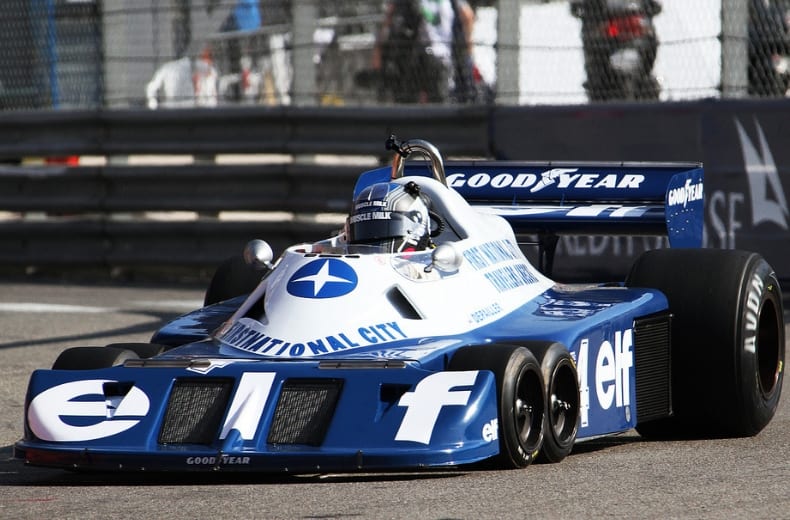 Source: Raphael Belly
Source: Raphael Belly
OK, so unless you were a Formula 1 driver in the 70s there’s very little chance you could have driven the Tyrrell P34. This is a shame because with six wheels it’s one of the oddest cars ever to exist, let alone race in a Grand Prix.
Despite being driven to victory in the Swedish Grand Prix by future world champion Jody Scheckter, the success of the Tyrrell P34 was short-lived. Wear and tear proved a problem for the front tyres, and in the end the sport’s governing body ruled that all competing cars have just 4 wheels.
INSURE YOUR MOTOR: RAC classic car insurance
Cadillac Cyclone (1959)
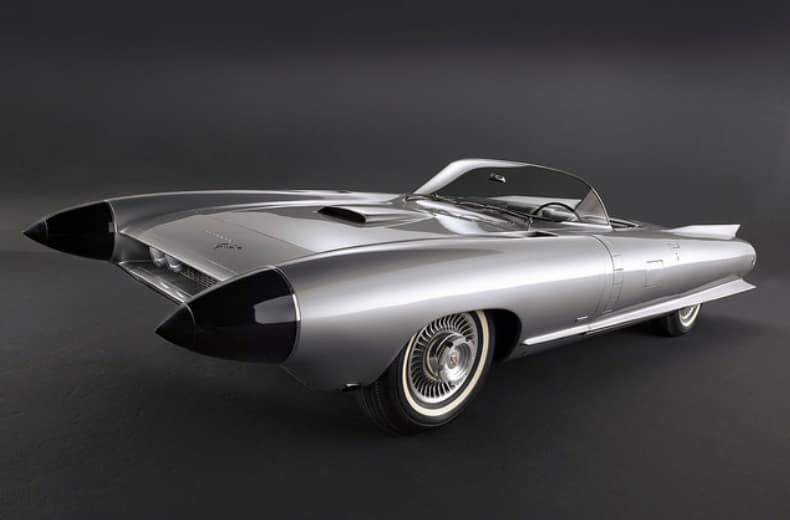 Source: James Vaughan
Source: James Vaughan
Looking like something out of The Jetsons, the Cadillac Cyclone unfortunately never made it past the concept stage. Borrowing design inspiration from NASA, the Cyclone had a Plexiglass bubble canopy and an intercom system that allowed passengers to communicate with people outside the vehicle.
Continuing the high-tech theme, the black cones at the front of the Cyclone contain the radars of the model’s crash avoidance system, an early forebearer of today’s adaptive cruise control that sent out warning lights if it detected an approaching object.

RAC sale – up to 33% off*
• Roadside cover from £5.29 a month†
• We get to most breakdowns in 60 mins or less
• Our patrols fix 4/5 breakdowns on the spot

Peel P50 (1962)
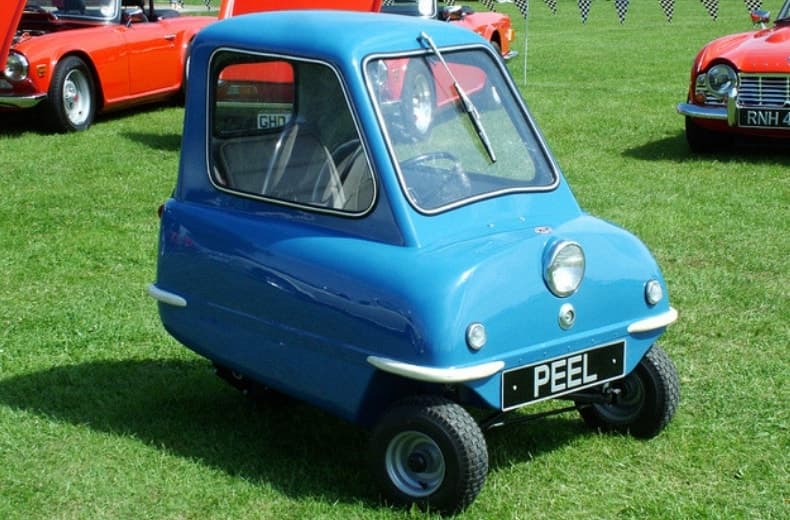 Source: Kenjonbro
Source: Kenjonbro
Measuring just 137cm in length, the compact Peel P50 is the world’s smallest production car and features just one seat, one windscreen wiper and even one headlight.
Only 50 of these bizzare little vehicles were produced in the original run, although in 2010 its British manufacturers announced they were developing an updated version of the car with electric motors, so it could yet make a surprise return to our roads. Keep your eyes peeled!
Bugatti Chiron (2018)
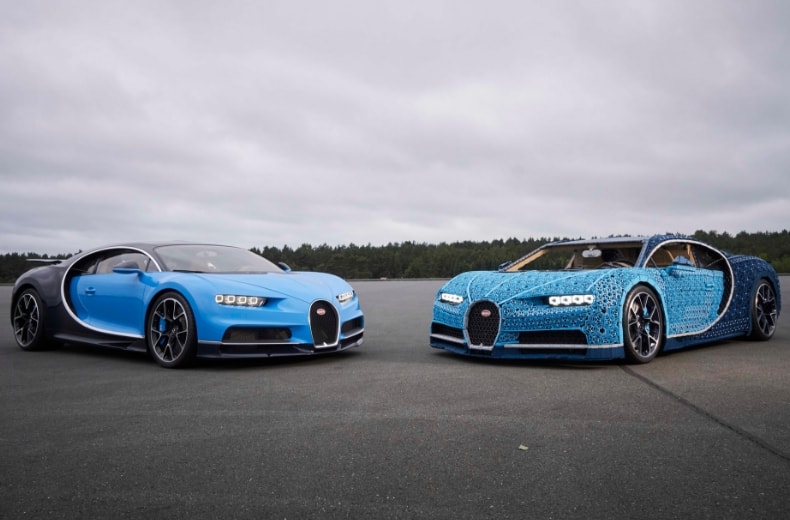 Source: Allen Tran
Source: Allen Tran
Take a second look at the Bugatti Chiron on the right because this 2018 model of the iconic motor is built entirely from LEGO. The life-size replica, unveiled at the 2018 Italian Grand Prix, contains over a million individual LEGO Technic pieces and weighs 500kg.
Thanks to 2,304 Power Function Motors generating 5.3hp, this blocky Bugatti tops out at speeds of over 12mph, only slightly less that it’s real-life equivalent, which has a top speed of 260mph.
READ MORE: Electric cars — the ultimate guide
Reliant Robin (1973)
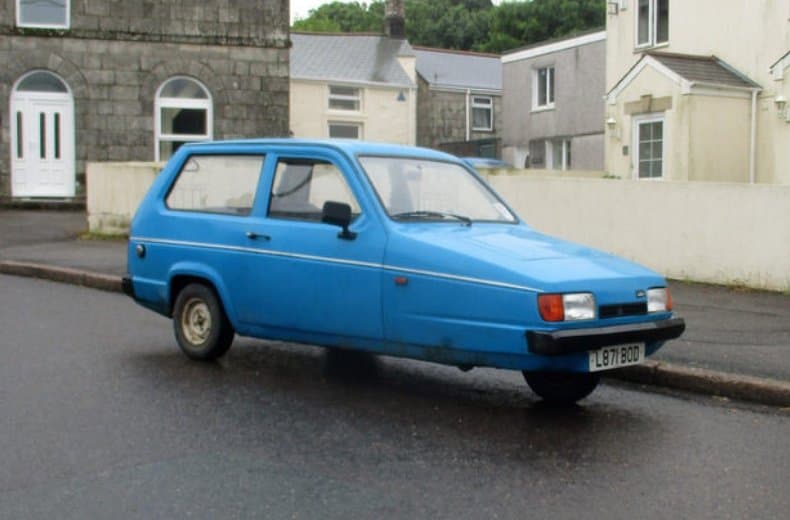 Source: Neil
Source: Neil
Best known as the run-around of dodgy dealer Delboy Trotter in the BBC show Only Fools and Horses, the Reliant Robin is one of the most recognisable British cars of all time - mostly for the wrong reasons.
The Robin’s three wheels meant it could be driven on the UK’s roads with just a motorcycle licence, despite having a top speed of 85mph. After the Chevrolet Cadillac, the Robin is the second biggest selling fibreglass-bodied car in the world, shifting over 63,000 models.
Toyota Sera (1990)
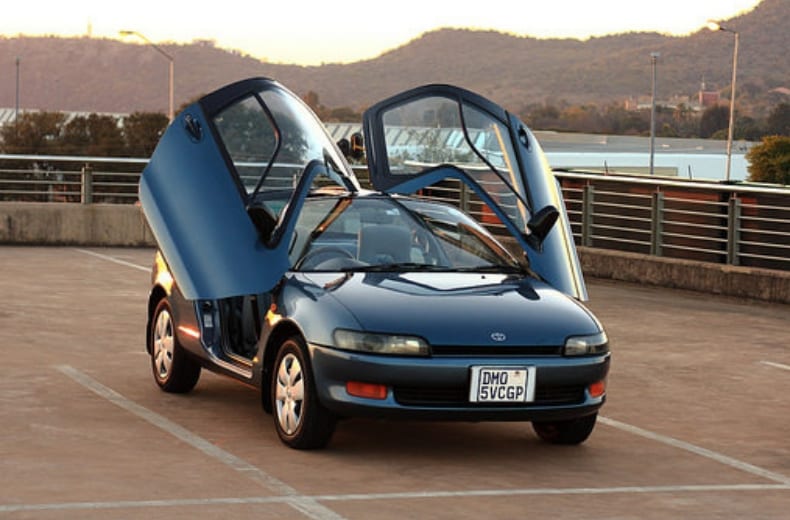 Source: Ryno du Plessis
Source: Ryno du Plessis
Car doors that open upwards are usually reserved for supercars, concept cars, or, in the case of Marty McFly, cars that transport you back to the future. However, in the early 90s these so-called “gullwing doors” also appeared on a modest hatchback coupe called the Sera.
Launched in March 1990, Toyota made 16,000 before ceasing production in December 1995. The car was never sold commercially in the UK; however, don’t despair just yet classic car fans, models have since exchanged hands throughout the world so you never know where a second-hand Sera might turn up.
SEE ALSO: New battery could charge electric cars in seconds
Stout Scarab (1935)
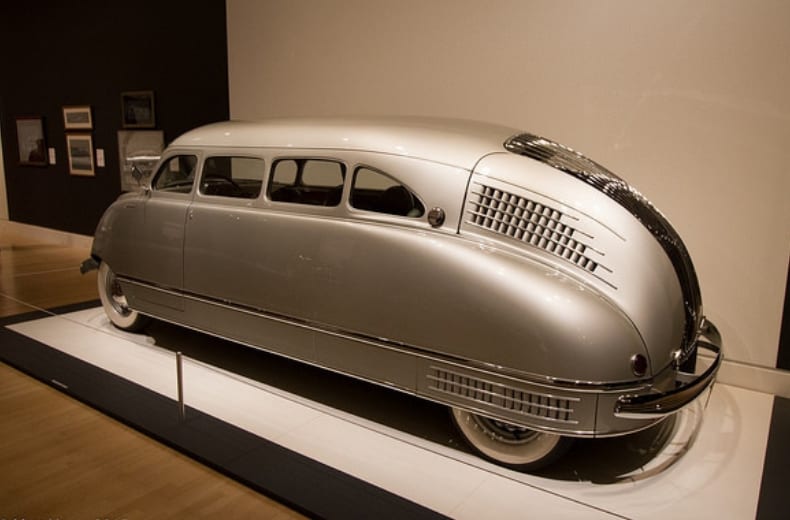 Source: Matthew Hayes
Source: Matthew Hayes
An early precursor to the modern minivan, the Stout Scarab was the brainchild of designer William Stout, an automotive pioneer when it came to integrating luxury into transportation.
Powered by a Ford V-8 engine, the rear-wheel-drive Scarab came complete with a card table, wicker headliner and six seats so you could bring along your friends for a rousing game of Rummy. Unfortunately, the price of the Scarab proved prohibitive and only nine were ever produced.
Are any of these bonkers motors on your personal wishlist? Or perhaps you’ve seen another weird set of wheels? Let us know in the comments below.
Did you know, you can get fined for moving out of the way of an ambulance?
Want more useful content like this sent straight to your inbox?

